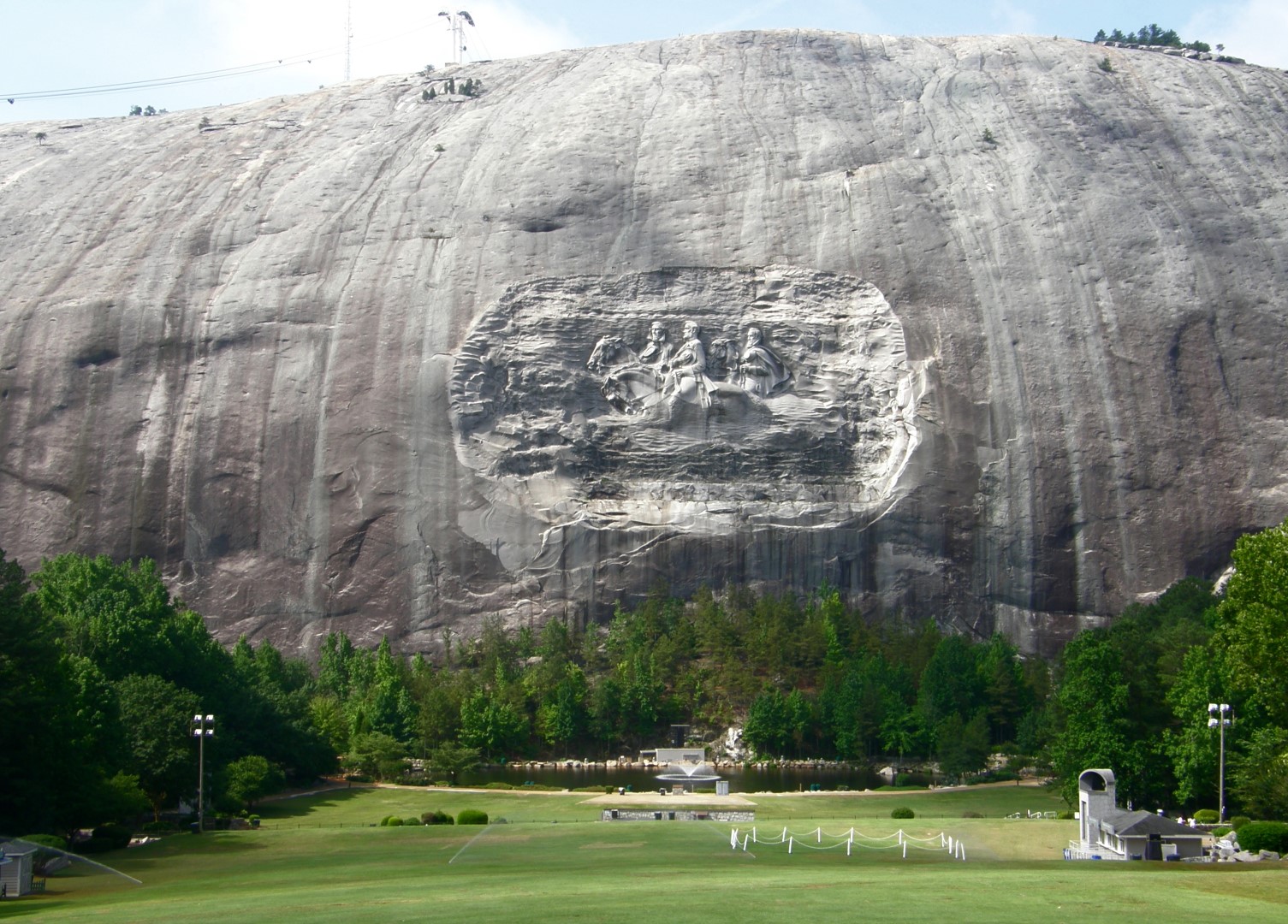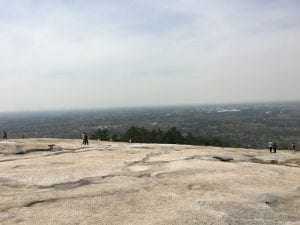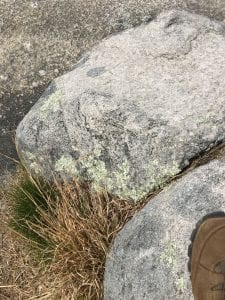We’re SAVED!!!
We’re SAVED!!!
We’re SAVED!!!
It’s a big, beautiful, old rock! Oh, the pioneers used to ride these babies for miles! And it’s in great shape.


For my blog project, I put my life at risk trying to scale the treacherous mountain made of stone. Many dangers include high altitudes and steep slopes you can fall off.
One of the main reasons I choose Stone Mountain is to force myself to do cardio in the name of SCIENCE! Stone Mountain has a one-mile hike up the mountain where the scenery spans across most of metro Atlanta. Stone Mountain is a state park so the natural ecosystem of the park is allowed to thrive within the park. Many wild animals roam the park as well as a thriving community of trees. On these trees, I noticed there were light yellow crusty patches all over the bark.
I discovered this discoloration was due to lichens. The lichen looked as if it was a parasite invading organisms. Upon further research it was discovered, lichen form via a mutualistic relationship between fungi and algae or cyanobacteria. I was excited by this organism because it was literally everywhere. It not only grew on trees but it grew on the rock itself. I believe the lichen I discover is called Lepraria incana. Lepraria incana is one of many indigenous species of lichen within the park.
Here’s a cool short film explaining how we got lichens so wrong.
Special thanks to my girlfriend Jessika for making this dangerous journey with me. Here is her reaction to me telling her I’ve taken a lichen to her whilst on the hike.





Sounds perilous, I’m glad you made it out alive! Interesting to observe that the lichens did not seem to have a preference for growing on trees over rocks or vice versa. From the pictures it appears to have white and green coloration, with white on the tree and more green on the rock. Do you think this has to do with the nutrient sources available? (i.e sunlight and organic matter vs just sunlight)
Sounds like a perilous journey, I’m glad you survived! Its interesting that there was no apparent preference for where the lichen grew despite differences in available nutrients. From the picture it looks like the lichen growing on the rock is more green, while the lichen on the tree is more white. DO you think this has to do with a difference in nutrients available leading to production of more or fewer chloroplasts?
Hey !
I am in love with your blog project layout. I love the theme and the background.
I was actually going to choose lichen at first, but I was afraid to because of the complexity between species. It really did not make sense (still does not make sense) how two species can join and become one.
I agree with you though lichen are found everywhere and anywhere! maybe not in the antarctic tundra BUT, they’re still cool.
I am also glad that you were able to climb the mountain as you gathered photos for the blog project.
I should probably comment on your most recent post (the 4th post), but I just wanted to say how I liked that you integrated a poem and I also like how much information you provide.